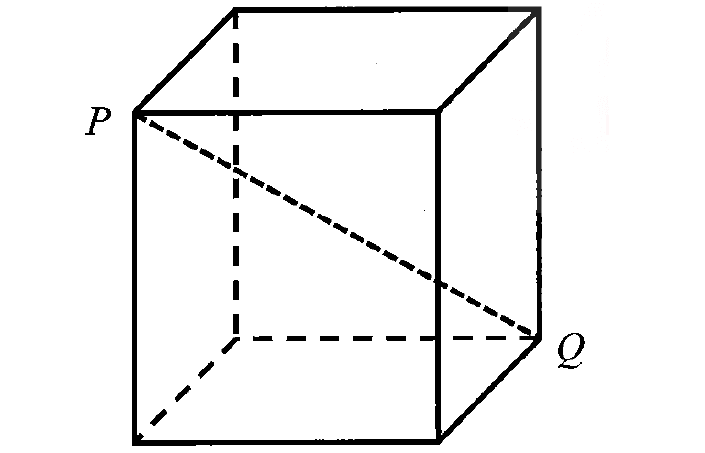EXTERIOR ANGLE THEOREM
This theorem is Proposition 1.16 in Euclid's Elements, which states that the measure of an exterior angle of a triangle is greater than either of the measures of the remote interior angles. This is a fundamental result in absolute geometry, because its proof does not depend upon the parallel postulate.
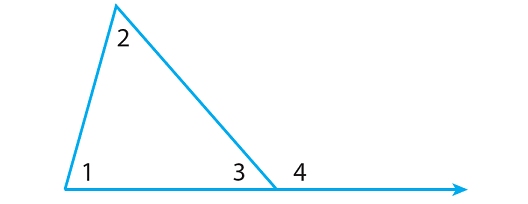
In the above diagram,
- m∠1, m∠2, and m∠3 are interior angles.
- m∠4 is an exterior angle.
- m∠1 and m∠2 are remote interior angles to m∠4.
Exterior Angle Theorem
The theorem states that the measure of an exterior angle is equal to the sum of its remote interior angles.
That is,
m∠1 + m∠2 = m∠4
Proof :
There is a special relationship between the measure of an exterior angle and the measures of its remote interior angles.
Let us understand this relationship through the following steps.
Step 1 :
Sketch a triangle and label the angles as m∠1, m∠2 and m∠3.
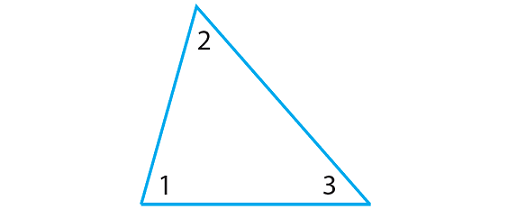
Step 2 :
According to Triangle Sum Theorem, we have
m∠1 + m∠2 + m∠3 = 180° ----(1)
Step 3 :
Extend the base of the triangle and label the exterior angle as m∠4.
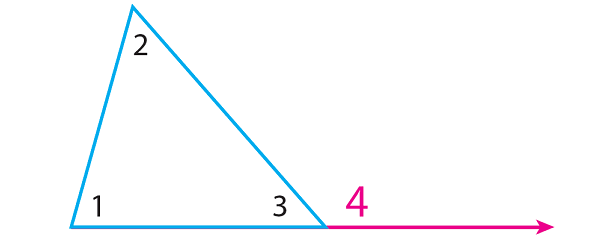
Step 4 :
m∠3 and m∠4 are the angles on a straight line.
So, we have
m∠3 + m∠4 = 180° ----(2)
Step 5 :
Use the equations (1) and (2) to complete the following equation,
m∠1 + m∠2 + m∠3 = m∠3 + m∠4 ----(3)
Step 6 :
Use properties of equality to simplify the equation (3).
m∠1 + m∠2 + m∠3 = m∠3 + m∠4
Subtract m∠3 from both sides.

Hence, the Exterior Angle Theorem states that the measure of an exterior angle is equal to the sum of its remote interior angles.
That is,
m∠1 + m∠2 = m∠4
Solved Problems
Problem 1 :
Find m∠W and m∠X in the triangle given below.

Solution :
Step 1 :
Write the Exterior Angle Theorem as it applies to this triangle.
m∠W + m∠X = m∠WYZ
Step 2 :
Substitute the given angle measures.
(4y - 4)° + 3y° = 52°
Step 3 :
Solve the equation for y.
(4y - 4)° + 3y° = 52°
4y - 4 + 3y = 52
Combine the like terms.
7y - 4 = 52
Add 4 to both sides.
7y - 4 + 4 = 52 + 4
Simplify.
7y = 56
Divide both sides by 7.
7y / 7 = 56 / 7
y = 8
Step 4 :
Use the value of y to find m∠W and m∠X.
m∠W = 4y - 4
m∠W = 4(8) - 4
m∠W = 28
m∠X = 3y
m∠X = 3(8)
m∠X = 24
So, m∠W = 28° and m∠X = 24°.
Problem 2 :
Find m∠A and m∠B in the triangle given below.
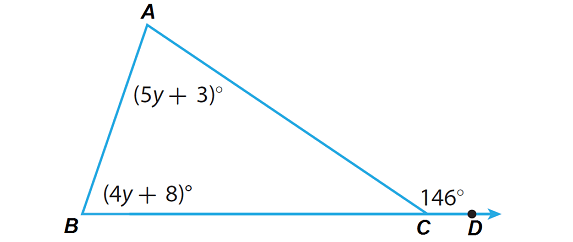
Solution :
Step 1 :
Write the Exterior Angle Theorem as it applies to this triangle.
m∠A + m∠B = m∠C
Step 2 :
Substitute the given angle measures.
(5y + 3)° + (4y + 8)° = 146°
Step 3 :
Solve the equation for y.
(5y + 3)° + (4y + 8)° = 146°
5y + 3 + 4y + 8 = 146
Combine the like terms.
9y + 11 = 146
Subtract 11 from both sides.
9y + 11 - 11 = 146 - 11
Simplify.
9y = 135
Divide both sides by 9.
9y / 9 = 135 / 9
y = 15
Step 4 :
Use the value of y to find m∠A and m∠B.
m∠A = 5y + 3
m∠A = 5(15) + 3
m∠A = 75 + 3
m∠A = 78
m∠B = 4y + 8
m∠B = 4(15) + 8
m∠B = 60 + 8
m∠B = 68
So, m∠A = 78° and m∠B = 68°.
Kindly mail your feedback to v4formath@gmail.com
We always appreciate your feedback.
©All rights reserved. onlinemath4all.com
Recent Articles
-
Digital SAT Math Problems and Solutions (Part - 152)
Apr 28, 25 11:54 AM
Digital SAT Math Problems and Solutions (Part - 152) -
Digital SAT Math Problems and Solutions (Part - 151)
Apr 26, 25 11:18 AM
Digital SAT Math Problems and Solutions (Part - 151) -
AP Calculus BC Problems with Solutions
Apr 26, 25 05:49 AM
AP Calculus BC Problems with Solutions
